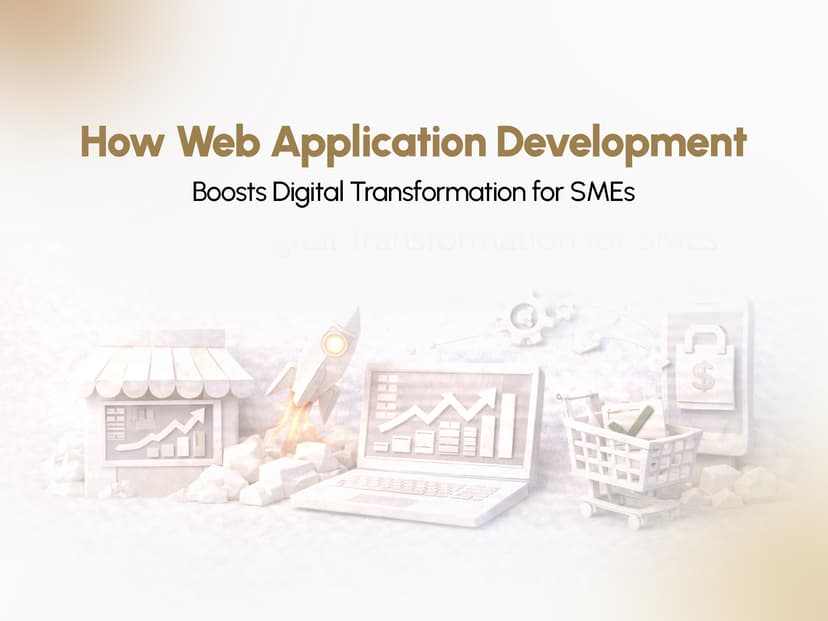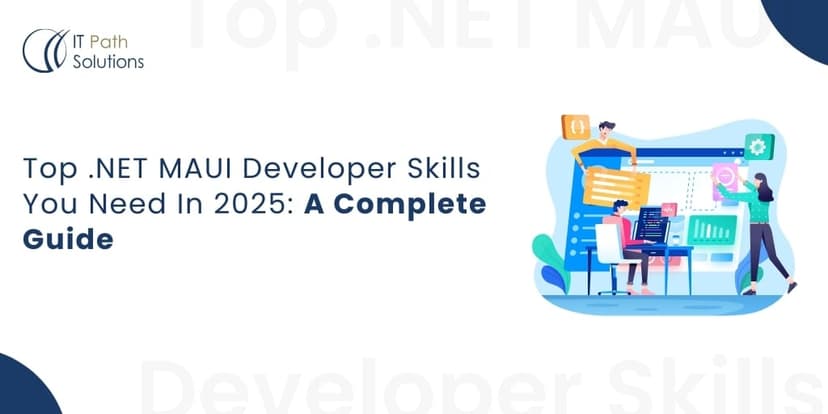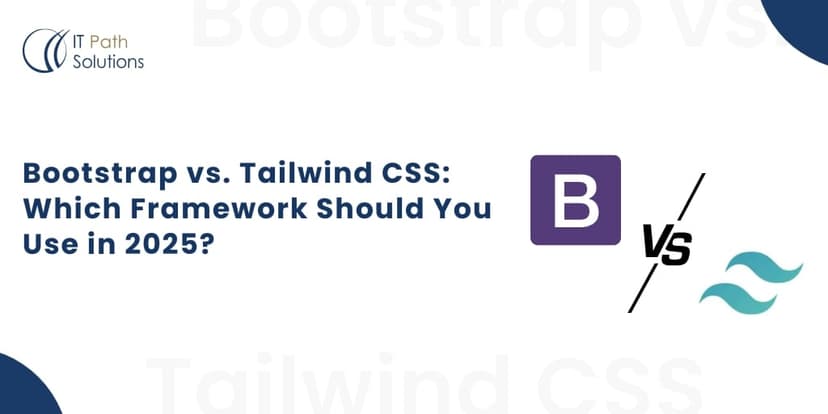Top Laravel Trends in Web Development: The Complete 2025 Developer’s Guide
Keyur Patel
September 12, 2025
7 min
Modern businesses lose an average of $5,600 per minute during website downtime, yet most development teams still build applications using outdated frameworks and methodologies. As smart developers who embrace cutting-edge Laravel development trends today position themselves for tomorrow’s success while their competitors struggle with legacy systems.
Someone’s sitting in the shade today because someone planted a tree a long time ago.
Laravel continues to dominate the PHP ecosystem, powering over 1.2 million websites globally. Furthermore, the framework’s evolution in 2025 introduces revolutionary features that transform how developers approach web application architecture. Therefore, understanding these trends becomes crucial for any developer serious about building scalable, maintainable applications.
The Laravel Development Dilemma: Why Most Teams Fall Behind
Development teams across industries face a persistent challenge: balancing rapid delivery with long-term maintainability. Moreover, the pressure to ship features quickly often leads to technical debt that haunts projects for years. In fact, 68% of Laravel projects started in 2023 already require significant refactoring due to poor architectural decisions made during initial development phases.
The primary struggle stems from developers treating Laravel as merely another PHP framework rather than embracing its full ecosystem potential. Consequently, teams miss opportunities to leverage Laravel application development best practices that could dramatically improve their productivity. Additionally, many developers fail to stay current with Laravel’s evolving landscape, leading to applications built on outdated patterns and practices.
Traditional development approaches create several pain points:
Performance Bottlenecks: Legacy Laravel applications often suffer from N+1 queries, inefficient database designs, and poor caching strategies. These issues compound over time, creating applications that struggle under moderate traffic loads.
Maintenance Nightmares: Without proper architectural planning, Laravel applications become increasingly difficult to maintain. Furthermore, teams find themselves spending more time fixing bugs than building new features.
Scalability Limitations: Applications built without considering modern Laravel patterns hit scaling walls much earlier than necessary. Therefore, businesses face expensive rewrites or migrations when growth demands exceed their application’s capabilities.
Security Vulnerabilities: Outdated Laravel development practices expose applications to security risks that modern framework features could easily prevent. Moreover, teams using deprecated packages or ignoring security updates create unnecessary exposure to threats.
The Laravel Evolution Framework: Mastering 2025’s Game-Changing Trends
The landscape of Laravel software development transforms dramatically in 2025, introducing patterns and practices that revolutionize web application development. Therefore, successful developers must master these five critical trends that define modern Laravel development.
Trend 1: Laravel Octane and High-Performance Applications
Laravel Octane represents the most significant performance leap in the framework’s history. Consequently, applications can now handle thousands of concurrent requests without traditional PHP’s process overhead. The integration with Swoole and RoadRunner enables persistent application states, dramatically reducing bootstrap time.
Real-world implementations show remarkable results. For instance, a SaaS platform migrated from traditional Laravel deployment to Octane achieved a 400% improvement in request throughput while reducing server costs by 60%. Furthermore, the persistent memory model allows for advanced caching strategies previously impossible in standard PHP environments.
Implementation requires careful consideration of memory management and shared state. Therefore, developers must restructure applications to avoid memory leaks and ensure thread safety. Additionally, proper monitoring becomes crucial for maintaining optimal performance in production environments.
Trend 2: API-First Architecture with Laravel Sanctum
Modern web applications increasingly adopt API-first approaches, and Laravel Sanctum provides the perfect foundation for secure, scalable API development. Moreover, the shift toward microservices and mobile-first experiences makes API design a critical skill for Laravel developers.
Sanctum’s token-based authentication system offers flexibility without complexity. Consequently, developers can implement secure API authentication for SPAs, mobile applications, and third-party integrations using a unified approach. The framework’s built-in rate limiting and middleware system provides additional security layers that protect against common API vulnerabilities.
Successful API-first implementations follow specific patterns:
Resource Transformation: Laravel’s API resources enable consistent data formatting across endpoints while maintaining flexibility for different client requirements.
Version Management: Proper API versioning strategies ensure backward compatibility while allowing continuous feature development.
Documentation Integration: Tools like Laravel’s API documentation generators streamline the process of maintaining accurate, up-to-date API documentation.
Trend 3: Real-Time Features with Laravel Broadcasting
Real-time functionality becomes table stakes for modern web applications. Therefore, Laravel’s broadcasting system, enhanced with Pusher Channels and WebSocket support, enables developers to build engaging, interactive experiences without complex infrastructure management.
The integration between Laravel Echo, Vue.js, and WebSocket connections creates seamless real-time features. Furthermore, Laravel’s event-driven architecture makes implementing real-time notifications, live chat, and collaborative features straightforward and maintainable.
Key implementation strategies include:
Event-Driven Design: Proper event structuring ensures scalable real-time features that don’t compromise application performance.
Queue Integration: Background job processing prevents real-time features from blocking primary application functionality.
Connection Management: Efficient WebSocket connection handling maintains performance under high concurrent user loads.
Trend 4: Serverless Laravel with Laravel Vapor
Laravel Vapor transforms how developers deploy and scale Laravel applications by leveraging AWS Lambda’s serverless infrastructure. Consequently, applications can handle variable traffic loads without manual server management while reducing operational overhead.
The serverless model particularly benefits applications with unpredictable traffic patterns. Moreover, Vapor’s integration with AWS services provides access to enterprise-grade infrastructure without complexity traditionally associated with cloud deployments.
Vapor implementation requires architectural considerations:
Stateless Design: Applications must embrace stateless principles to function correctly in serverless environments.
Database Optimization: Connection pooling and query optimization become critical for managing database connections in Lambda functions.
Asset Management: Static asset handling requires specific strategies for optimal performance in serverless deployments.
Trend 5: Advanced Testing with Laravel Dusk and Pest
Testing practices evolve significantly in 2025, with Laravel Dusk providing comprehensive browser testing capabilities and Pest introducing elegant, expressive testing syntax. Furthermore, these tools enable test-driven development practices that improve code quality and reduce debugging time.
Modern Laravel testing strategies combine unit tests, feature tests, and browser tests into comprehensive test suites. Therefore, developers can confidently deploy applications knowing that critical functionality works correctly across different environments and user interactions.
Advanced testing implementations include:
Continuous Integration: Automated testing pipelines ensure code quality throughout the development lifecycle.
Test Data Management: Database seeding and factory patterns create realistic test scenarios without manual data setup.
Performance Testing: Load testing integration identifies potential bottlenecks before production deployment.
Implementation Strategy: From Trends to Production-Ready Applications
Understanding Laravel trends provides limited value without proper implementation strategies. Therefore, successful development teams follow systematic approaches that transform theoretical knowledge into practical, production-ready applications.
The transition from trend awareness to implementation requires structured planning. Moreover, teams must balance adopting new features with maintaining existing application stability. Consequently, successful Laravel software development teams develop migration strategies that minimize risk while maximizing benefit from new framework capabilities.
Assessment and Planning Phase: Teams should audit existing applications to identify areas where new Laravel trends provide the most value. Furthermore, this assessment should consider technical debt, performance bottlenecks, and feature requirements to prioritize implementation efforts.
Incremental Implementation: Rather than wholesale rewrites, successful teams implement new Laravel features incrementally. Therefore, they can validate improvements and adjust strategies based on real-world results without disrupting existing functionality.
Performance Monitoring: Implementation of new Laravel trends requires robust monitoring to ensure improvements deliver expected benefits. Additionally, teams should establish baseline metrics before implementation to measure success accurately.
Conclusion: Your Path to Laravel Mastery Starts Now
Laravel development in 2025 demands more than basic framework knowledge it requires mastery of emerging trends that define the future of web application development. Therefore, developers who embrace Laravel Octane’s performance improvements, API-first architecture, real-time features, serverless deployment, and advanced testing practices position themselves as industry leaders.
The Laravel ecosystem continues evolving at an unprecedented pace, creating both opportunities and challenges for development teams. Consequently, staying current with these trends becomes crucial for building applications that meet modern user expectations while maintaining long-term viability.

Keyur Patel
Co-Founder
Keyur Patel is the director at IT Path Solutions, where he helps businesses develop scalable applications. With his extensive experience and visionary approach, he leads the team to create futuristic solutions. Keyur Patel has exceptional leadership skills and technical expertise in Node.js, .Net, React.js, AI/ML, and PHP frameworks. His dedication to driving digital transformation makes him an invaluable asset to the company.
Related Blog Posts

How Web Application Development Boosts Digital Transformation for SMEs
There is a pervasive myth in the business world that “big” equals “better.” We assume that the Fortune 500 companies, with their billion-dollar budgets and armies of IT staff, have the technological upper hand. In current times, that assumption is dead wrong. Large enterprises are like cruise ships. They are massive, powerful, and stable. But… How Web Application Development Boosts Digital Transformation for SMEs

Top .NET MAUI Developer Skills You Need In 2025: A Complete Guide
Imagine this: Your team just launched a new Android app. A few weeks later, the iOS version is still in testing. Meanwhile, desktop users are left waiting. Deadlines slip, budgets stretch, and your developers are entangled in duplicate code. Sound familiar? Now, picture this instead: One codebase. Four platforms. A unified experience for every user,… Top .NET MAUI Developer Skills You Need In 2025: A Complete Guide

Bootstrap vs. Tailwind CSS: Which Framework Should You Use In 2025?
You will be surprised to know that a new website is launched every 3 seconds. In that dizzying pace of digital innovation, one silent debate brews behind the scenes: Which framework truly delivers from Bootstrap and Tailwind CSS? It’s a typical question developers, startups, design teams, and enterprises have because the right choice doesn’t just… Bootstrap vs. Tailwind CSS: Which Framework Should You Use In 2025?




